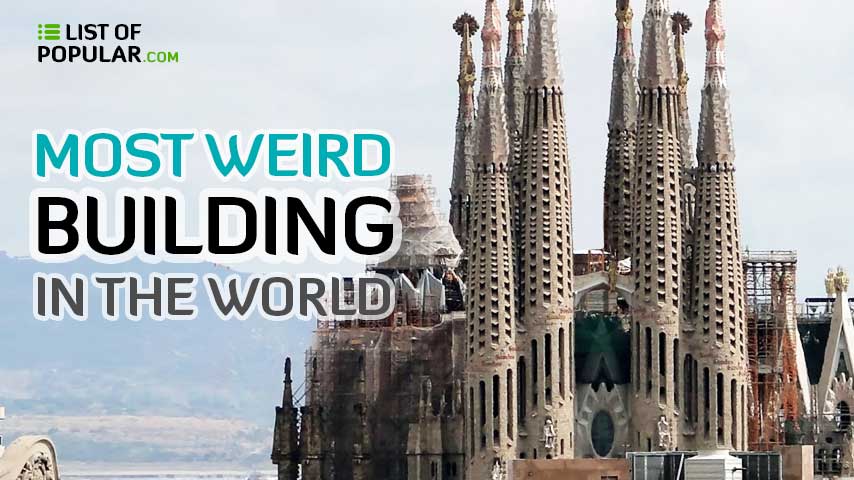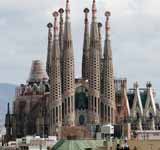Known simply as the Sagrada Familia, is a Catholic basilica in Barcelona (Spain), designed by the architect Antoni Gaudí. Started in 1882, it is still under construction. It is the masterpiece of Gaudí, and the greatest exponent of Catalan modernist architecture. It is one of the most visited monuments in Spain, next to the Prado Museum and the Alhambra in Granada, and it is the most visited church in Europe after the basilica of San Pedro del Vaticano. When completed it will be the highest Christian church in the world.
2. Bishop Castle
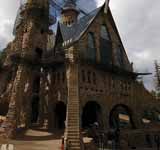
Bishop Castle began as a family project in the Wet Mountains in South Colorado. There, in the San Isabel National Forest near Rye, named after its builder Jim Bishop Castle located directly on State Highway 165, which meets about 13 miles (21 km) further north at McKenzie Junction on State Highway 96. The road is part of the Scenic and Historic Byway Frontier Pathway and Bishop Castle is on the official map.
3. Capela dos Ossos
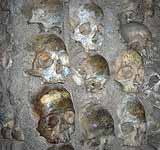
4. Coral Castle

5. Dai Heiwa Kinen Tō
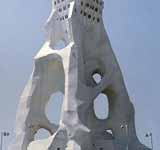
The Dai Heiwa Kinen Tō (in Japanese: Great prayer tower for peace) or Cenotaph Tower to pray for peace of the victims of the World War is a monument consisting of in a tower is 180 meters high, white, and was built by the Japanese religious group of the Perfect Freedom in August 1970.
6. Dalí Theatre and Museum

7. Dr. Evermor's Forevertron

According to the Guinness Book of World Records it is the biggest freestanding scrap metal sculpture in the world. 50 feet high 120 feet wide and weighing more than 300 tones. The Forevertron is constructed out of historic machined parts from the early days of industrialization. Completely made of discarded iron, copper, tin, nickel, bronze and stainless steel.
8. Gardens by the Bay
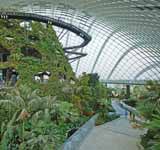
Gardens by the Bay is part of a strategy by the Government of the City of Singapore to transform the garden city into a city in the garden so that the quality of life of its inhabitants can be improved through green spaces. This government policy was announced by Singapore Prime Minister Lee Hsien Loong on National Day 2005. The parkland along the sea and at the Marina Reservoir is intended to be an attractive recreation area for the urban population. An international tender was made in 2006 for the master plans to the two planning areas Bay South Garden and Bay East Garden, the two companies Grant Associates and Gustafson Porter won.
9. Gardens of Bomarzo

10. Grandma Prisbrey's Bottle Village
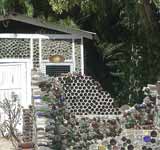
The idea of building a village out of empty bottles was born in 1956. The originator was 60-year-old Tressa "Grandma" Prisbrey. The idea was related to recycling, i.e. reducing the consumption of natural resources and reducing the amount of waste. Over the next 25 years, she built various passages, sculptures and architectural structures. The most interesting are the bottle tower, bottle car, Cleopatra's bathroom. Material Grandma Prisbrey found at a nearby landfill. Currently, the village is composed of thirteen buildings and twenty sculptures and is inscribed as the California Historical Landmark (No. 939). The village is located on Cochran Street 4595 in the Simi Valley. It was officially closed in 1984. In 1994, as a result of the earthquake, it was damaged. Tressa Prisbrey died in 1988.
11. Guggenheim Museum Bilbao
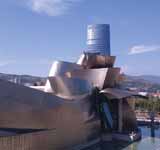
The most striking feature of the museum is the innovative building in which it is located, consisting of curvilinear and twisted shapes, covered with limestone, glass curtains and titanium plates. It has a total area of 24,000 m², of which 10,540 m² are reserved for exhibitions, distributed in 19 galleries. It is located on the banks of the Bilbao estuary, in an area called Abandoibarra, next to the La Salve bridge, which is surrounded by a hollow tower.
12. Horace Burgess's Treehouse

13. House on the Rock
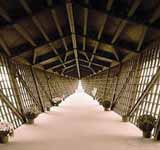
14. Hundertwasserhaus

15. Hằng Nga Guesthouse
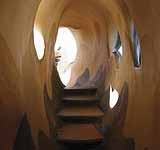
16. KunstHausWien

17. Matrimandir

18. Palais Idéal du Facteur Cheval

19. Park Güell

20. Porcelain House
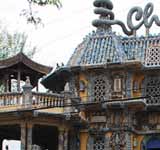
The Porcelain House is a 3,000 square meter private museum that was built and designed by Zhang LianZhi in Tianjin (PR China). He used no less than 700 million pieces of porcelain dating from the Tang Dynasty to the Qing Dynasty. The house is made up of about 13000 pieces of Chinese ceramics (vases and cutlery), 300 Komainu, 300 marble sculptures and about 20 tons of natural crystals. This house was built in the early 20th century by the French who occupied Tianjin. Then towards the end of the Qing Dynasty it served as a residence for a great finance minister. Finally before being abandoned she hosted a bank. In 2002 Zhang Lianzhi bought this dilapidated house for a work of art. He spent 4 years covering the exterior and interior of this house with his private porcelain collection.
21. Rock Garden of Chandigarh

22. Rubel Castle

23. Tarot Garden

24. Temple of All Religions
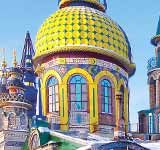
The Temple of All Religions or Temple of the Universe is an architectural complex located in the Staroye Arakchino Micro district in Kazan, Russia. It is made up of various types of religious architecture, including an Orthodox church, a minaret, and a synagogue, among others. Construction began in 1992 by local artist and philanthropist Ildar Khanov. The structure serves as a cultural center and residence for Khanov and his assistants. The structure is not an active temple of any religion, but rather a "temple of culture and truth", as Khanov describes his mission. It has become a popular landmark in the city of Kazan, which prides itself on the peaceful combination of different cultures (Islamic Tatar, Russian Orthodox, and others). The temple is visited by both tourists and people seeking Khanov's help. Khanov says that in time the structure will feature 16 domes, corresponding to the 16 major world religions.
25. Waldspirale
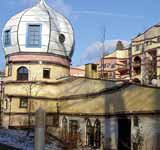
The Waldspirale is a residential complex in the Bürgerparkviertel Darmstadt with 105 apartments, an underground car park, a café, a bar and a kiosk. The courtyard has a children's playground and a small man-made lake. One of the peculiarities of the U-shaped building is its eye-catching façade, which does not follow a pattern of design, with "rows of dancing" windows and "tree tenants", trees growing out of the windows.
26. Wat Pa Maha Chedi Kaew

27. Watts Towers
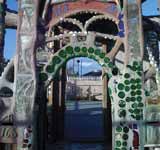
28. Buddha Park
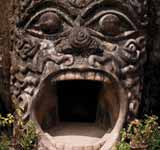
The Buddha Park is full of meadows, bathed by the Mekong River. It is also called Wat Xieng Khuan, and is considered a spiritual city. The park was built in 1958. Luang Pu Bunleua Sulilat was a shaman priest who followed the traditions and customs of Hinduism and Buddhism, and was in charge of the construction of the park. It contains more than 200 statues. The statues are made of cement and have very original designs. The statues seem to be centuries old, but the truth is that they are relatively modern. There are numerous sculptures of Buddha, and numerous characters of the Hindu tradition.

